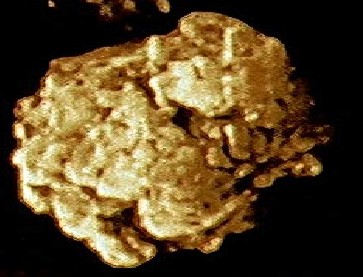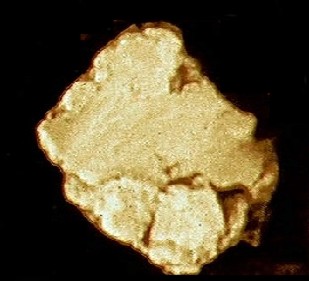Polycrystalline diamond
Polycrystalline diamond abrasives are manufactured by transforming graphite into diamond via a high temperature and high pressure explosion process. The resulting particle is comprised of numerous microcrystallites bonded together. Particle sizing is accomplished by milling or grinding the aggregate particle. Note the energy of milling can be controlled to also alter the friability of the polycrystalline diamond, which has a very significant influence on the final surface finishing charateristics.
Polycrystalline diamond as compared to synthetic and natural monocrystalline diamond provides better surface finishes and higher removal rates for metallographic specimen preparation. The features and advantages of polycrystalline diamond include the following:
- Higher cutting rates
- Very uniform surface finish
- More uniform particle size distribution
- Higher removal rates (self sharpening abrasives)
- Harder/tougher particles
- Blocky shaped
- Hexagonal microcrystallites (equally hard in all directions)
- Extremely rough surface (more cutting points)
- Surface area 300% greater than monocrystalline diamond
- No abrasion-resistant directionality (abrasion independent of particle orientation)
Sub-micron Polycrystalline Diamond Technical data
|
Appearance (dry state): |
Color |
Gray |
|
|
Chemical composition: |
Carbon |
up to 88% |
|
|
Hydrogen |
up to 1% |
||
|
Nitrogen |
up to 2.5% |
||
|
Oxygen |
up to 10% |
||
|
Physical data: |
Area of surface: |
1.31 x 10-7 in2/oz |
(300 m2/gr) |
|
Particle size: |
under 1.57x 10-5 in. |
(under 0.0004 mm) |
|
|
Specific density: |
0.007 lb/in3 |
(200 kg/m2) |
|
|
Mass loss during heating: |
5.7% |
||
|
Mass of unburning inclusions: |
1.4% |
||
|
Mass of oxidizable carbon: |
4.3% |
||
|
Area of coherent diffusion: |
0.1-0.25 x 10-9 in. |
(4-10 x 10-9 m) |
|
|
|
Oxidation temperature in the open atmosphere at heating rate 50(F/min.: |
1,790(F) |
977(C) |
|
Electrical conductivity: |
non-conductive |
The important characteristics for polishing with diamond include: particle size, particle size distribution, PC diamond friability, vehicle and dispersion characteristics.
The particle size distribution is the most commonly used method for monitoring the quality control of the diamond product. It describes how well the particles are dispersed and the size range of the actually grinding particles. A typical curve is shown below. Note that for very fine diamond particles the size classification becomes very dependent upon the analytical equipment and technique used.
 |
|
Polycrystalline Diamond Friability
Equally important the small cutting surface area of polycrystalline diamond is its FRIABILTY. Friablity plays an important role in obtaining a consistent polishing for very small polycrystalline diamonds. For example, a high continually breaks down during the polishing operation and therefore produces better surface finishes and improved cut rates.
 |

|
| Figure 2a. Low friability Diamond | Figure 2b High friability Diamond |
The friablity of the diamond is controlled either directly or indirectly by the amount of force which is used in the crushing operation. This crushing operation is actually very important, because it relates to how consistent and repeatable the diamond polishing operation will be, especially for nanometer scale polishing operations.
NANOFINISH Corporation has worked directly with the manuafactuer of the polycrystalline diamond to monitor and control the crushing operations. This provides NANOFINISH Corporation with the ability to produce more consistent and more repeatable diamond lapping slurries for the data storage surface finishing operations.
